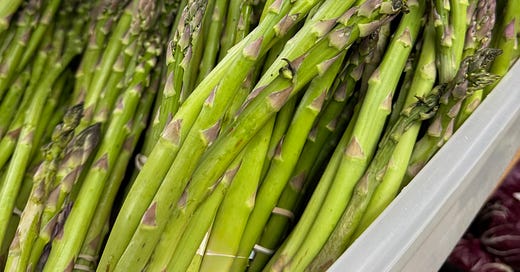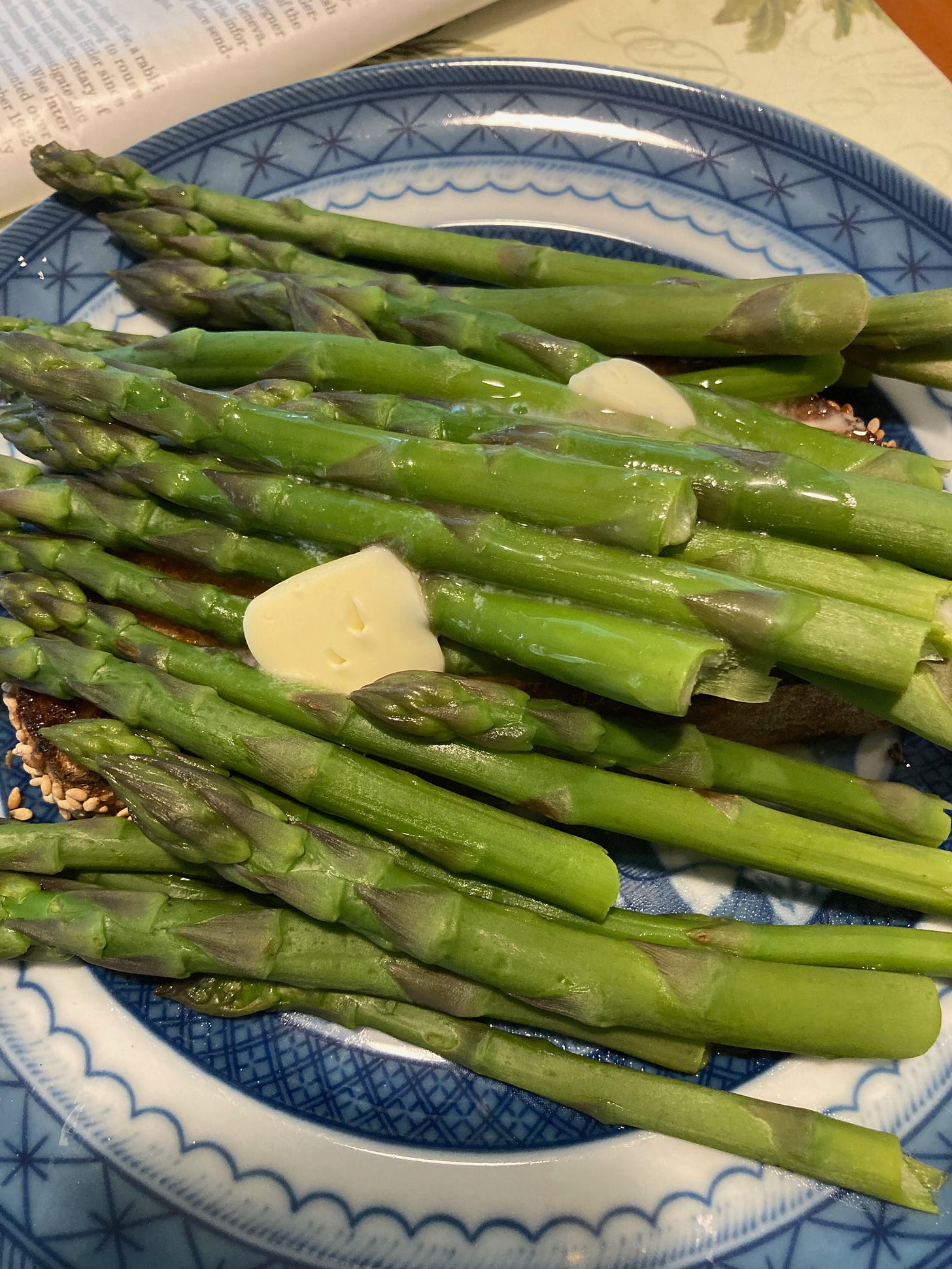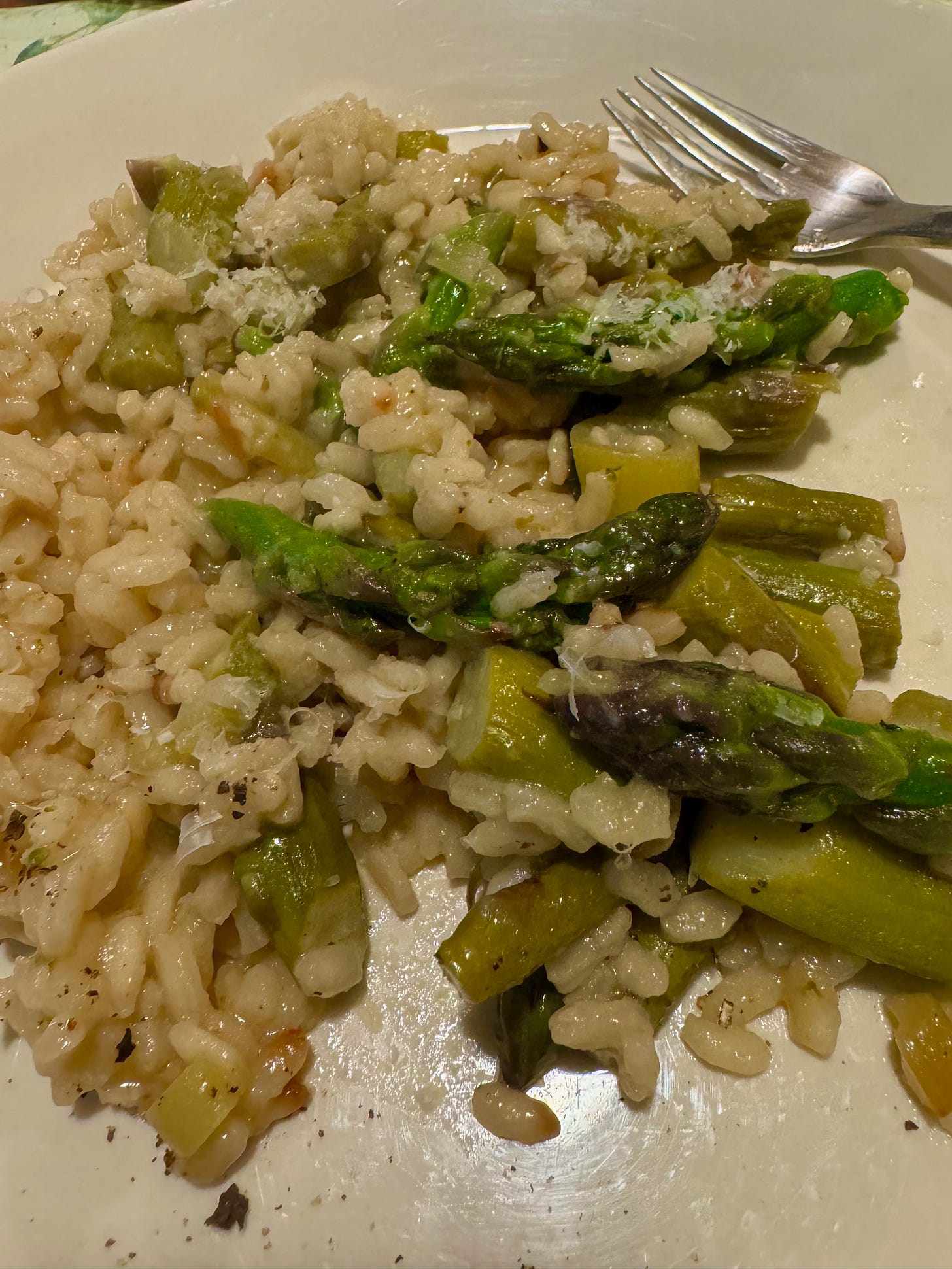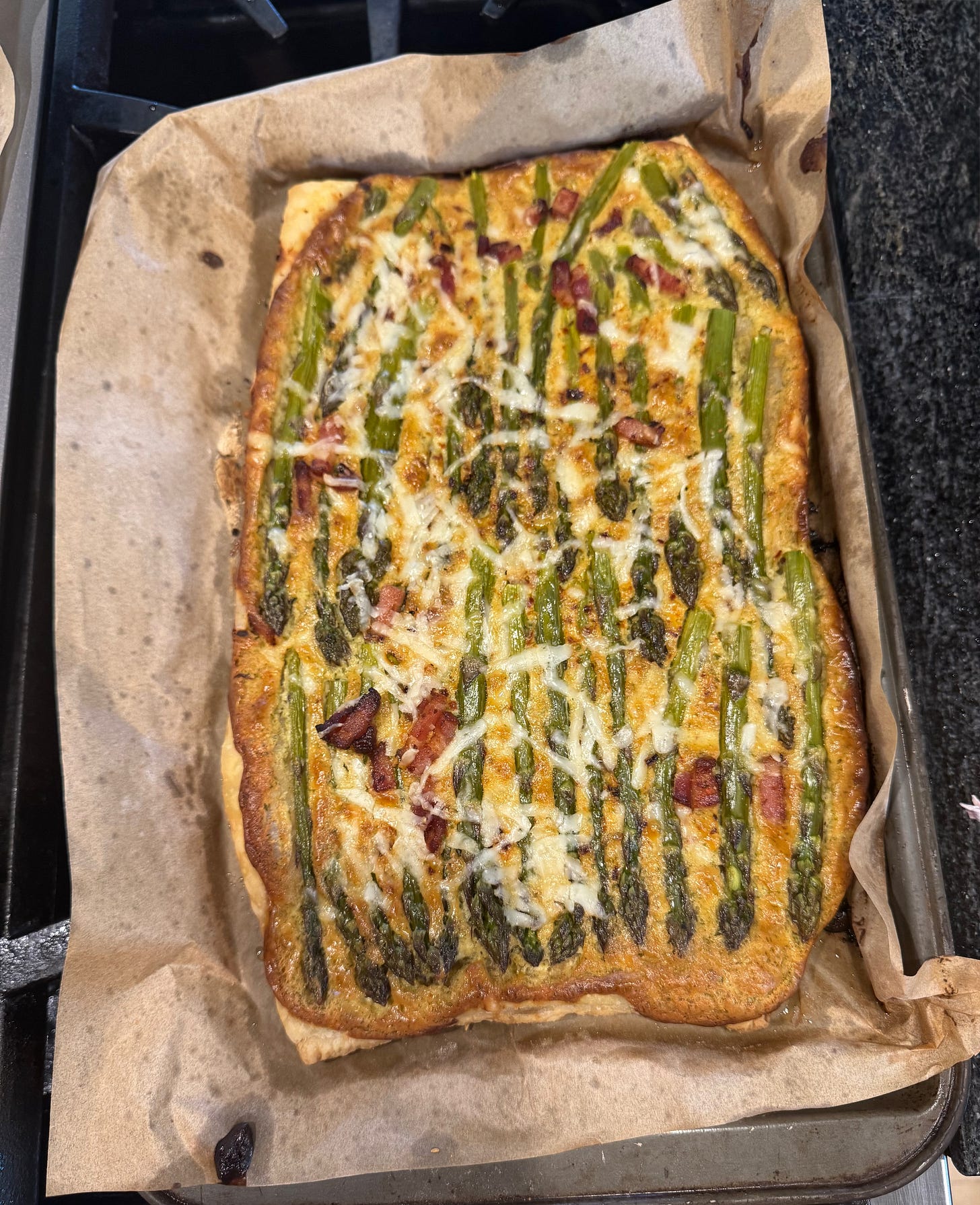I really did call it sparrow grass when I was a little kid and I encouraged my own kids to do the same. Why? I dunno, tradition, maybe.
I have written several times about my father’s addiction to asparagus. He had a fine garden plot that produced fat early spears and he loved to harvest a few just before breakfast, bring them into the kitchen, and then boil them practically to a mash and serve them over toasted slices of WonderBread, spread with margarine and made soggy by the cooking juices.
But what I loved most was eating the stalks right out of the garden, grassy-flavored and crisp-textured, right in the garden to be specific, but at the table—not so much.
Much later in life I discoverd that asparagus actually could be cooked in a way to make it almost as desirable, possibly even more desirable, as that garden-fresh vegetable I loved so much. The trick, as with so many vegetables, is not to overcook it, which is to say, cook it just until it is tender but still encloses all that rapturous flavor that it has when raw. Same thing with peas, I think, and the same thing with fresh corn, same thing with green beans, and so many others.
On its own, maybe with melted butter or an excellent extra-virgin olive oil poured over it while still warm, gently poached asparagus is a very fine dish. I often remember my late friend the food writer Nika Standen Hazelton who was, somewhat improbably, the food writer for William Buckley’s National Review. Nika was famous for a dinner party at which nothing but the season’s finest asparagus was served—as soup, as risotto, and somehow as both a main course and a dessert. Probably a salad as well.
Asparagus risotto
It was my discovery of asparagus risotto, partly over- and partly undercooked, that revealed I could have the best of both worlds, my father’s and my own. . . overcooked in the risotto, undercooked in the garnish. A neat trick for this is to trim the asparagus spears in the usual way, breaking them at the point in the stalk where you can easily snap away the tough, fibrous ends. But do not discard those ends. Instead add them to the chicken or vegetable stock (add the stalks to the stock, why is English so complicated?). Simmer gently in a covered pan until the stalks are very soft. Then strain them out and use the asparagus-flavored stock to make your risotto.
Please don’t repudiate risotto. It has a totally undeserved reputation for being difficult and tiresome to cook--all that standing and stirring over a hot stove. Honestly, in my kitchen it’s what we turn to for a quick, delicious meal, especially if unexpected company arrives for supper. This spring-into-summer season is a splendid time for asparagus, but the basic recipe could be adapted for all kinds of vegetables--think fresh green peas in July, or ripe tomatoes and sweet red peppers in August, or maybe butternut squash in the fall. They all fall into the same pattern, which is this:
Sauté very gently in olive oil or unsalted butter (or a combination) some finely chopped aromatics (onions, garlic, parsley) along with the principal flavoring ingredient (in this case, asparagus, the tender stalks only, broken into inch long pieces), then stir in the rice and let it absorb some of the fat. (Italian chefs call this la tostatura.) Add a little white wine and as soon as it is absorbed, start adding stock (chicken, beef, vegetable) which you will have on the side, just barely simmering. Add it in increments of ¼ to ½ cup, and stir it in. As soon as the stock is absorbed, add more, stirring the while, until the rice is done--cooked through but still with a little bite in the center. This should take just 20 to 30 minutes and in the end the rice should be what Venetians call all’onda, meaning wavey, thick with liquid but not the least bit soupy. This is why risotto cooks insist on arborio or carnaroli or vialone nano rice. With their starchy veneer, these varieties of short-grain rice will develop just the right almost velvety coating. When done, add more butter and grated cheese if you wish, cover the pan and let it rest for 10 to 20 minutes before serving. Scroll down for the recipe, below the paywall.
Asparagus and goat cheese tart
Another way to use asparagus is in a tart cushioned in a mixture of plain goat cheese and sour cream or crème fraîche. I made this recently for a celebration after my grandson’s high school graduation—the first of my grandchildren to go through what is, for me, a very emotional event. We gathered in my kitchen (still too cold to sit outside on the kitchen porch) for fried chicken (his favorite) and these asparagus tarts (mine). There are several recipes online but I’ve added my own, below the paywall. Note that, since discovering Dufour’s frozen pastry some years ago, I have almost given up struggling to make pie crust. Dufour’s buttery puff pastry was what I used in these, but their vegan-approved dairy-free pie and pastry dough is also excellent. And they seem to be much more widely available than formerly. Find out more here.
Keep reading with a 7-day free trial
Subscribe to On the Kitchen Porch to keep reading this post and get 7 days of free access to the full post archives.







